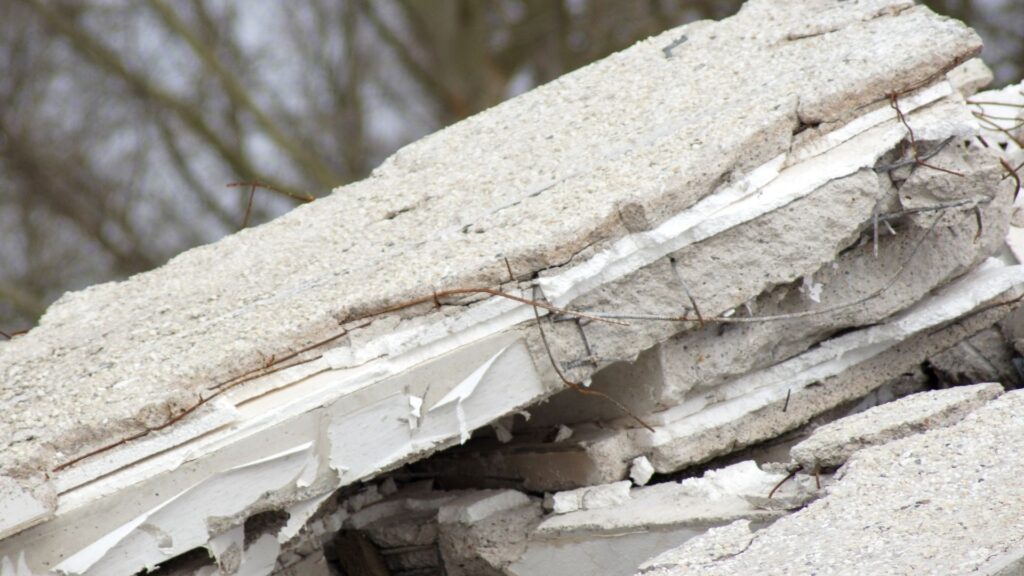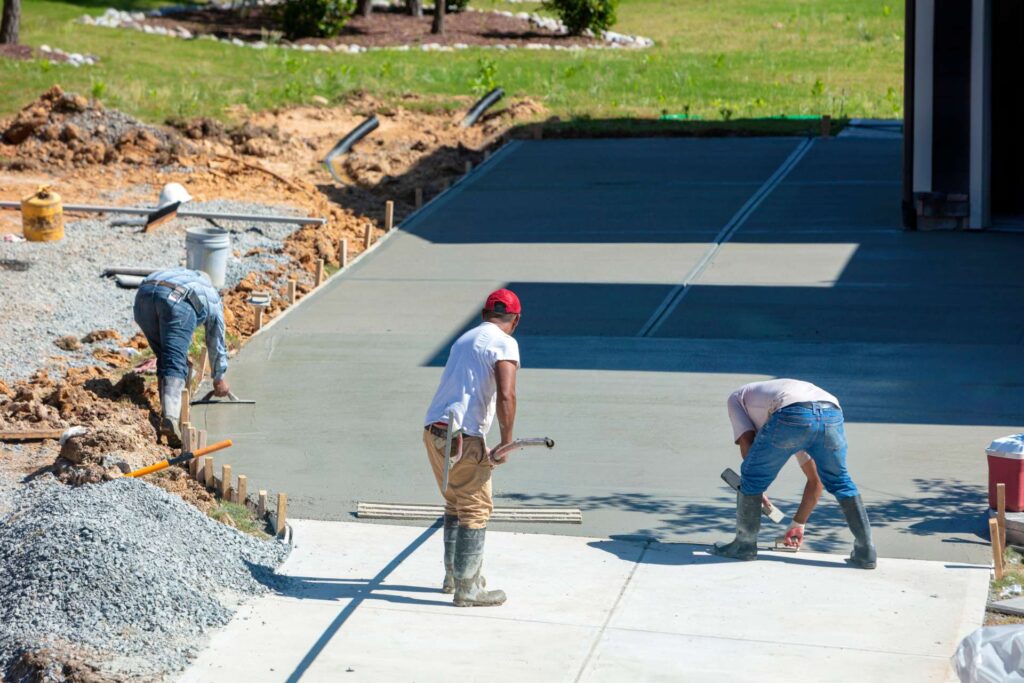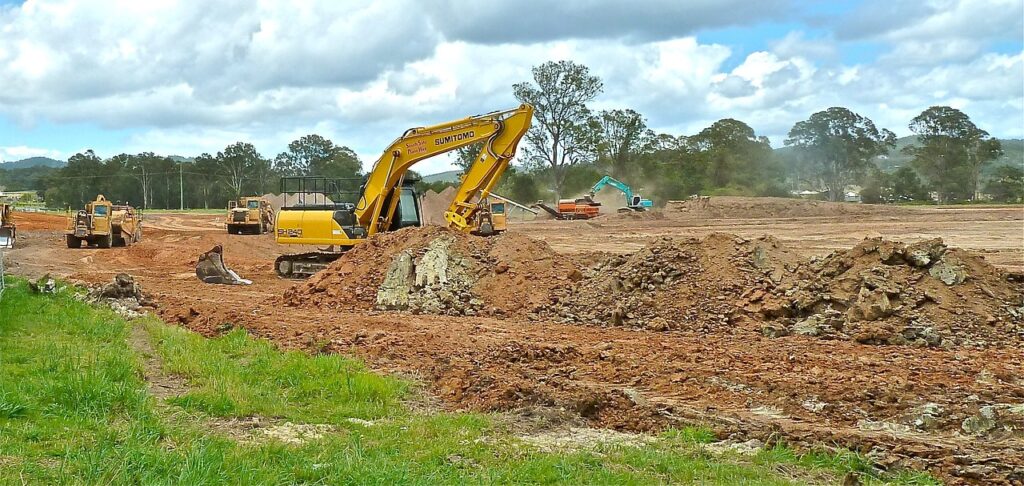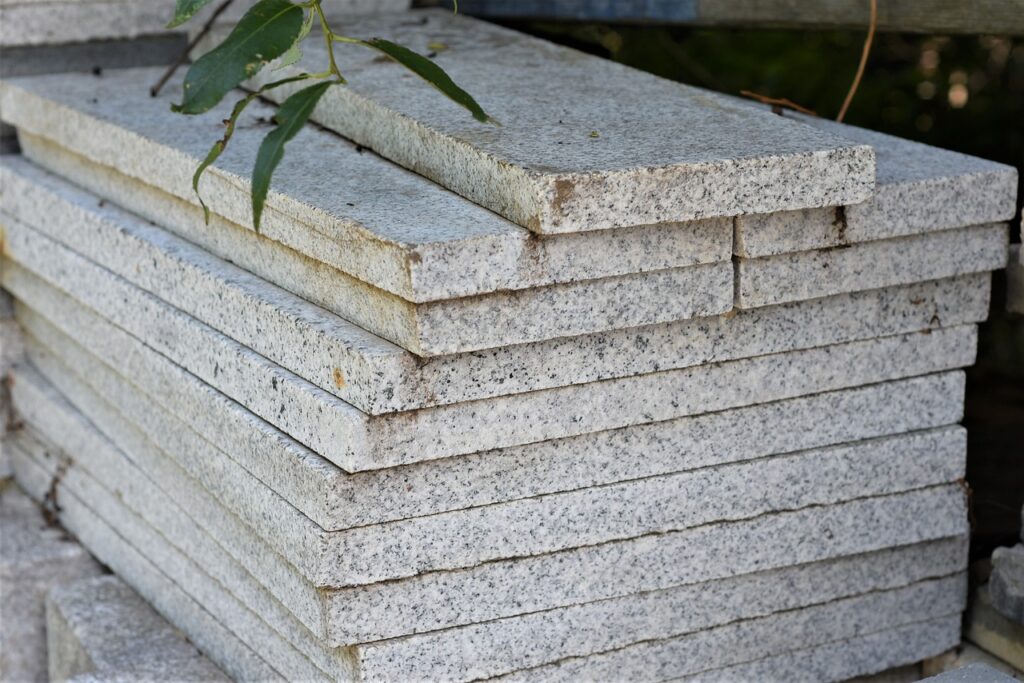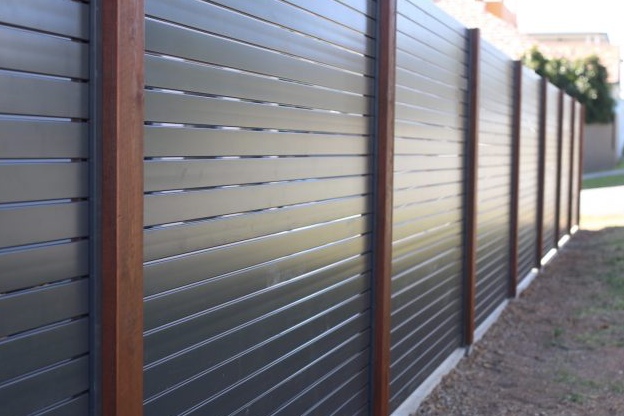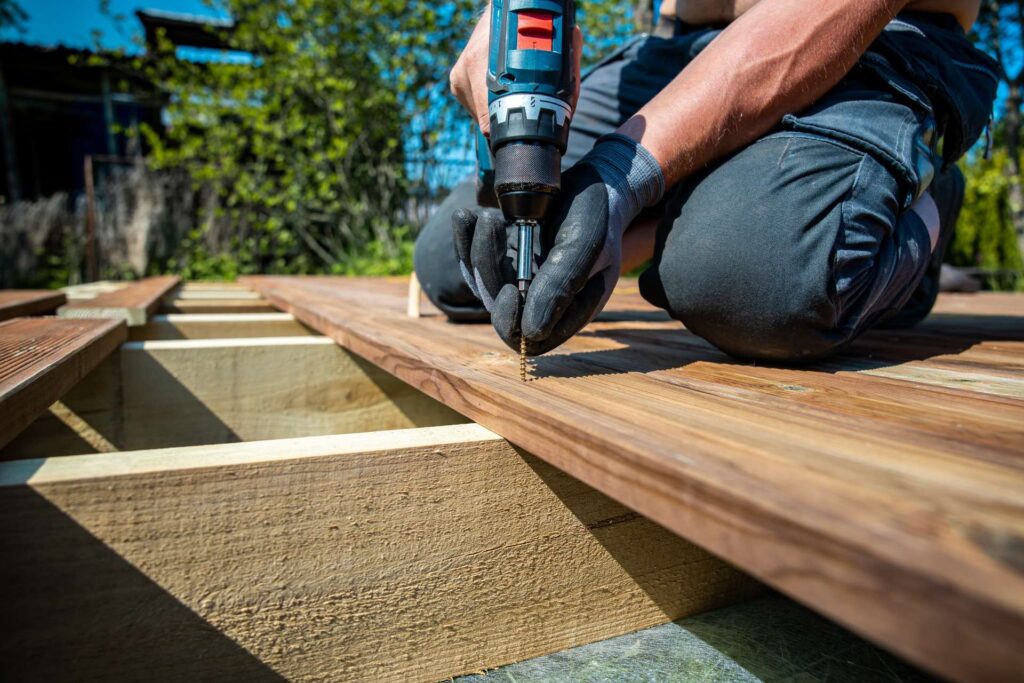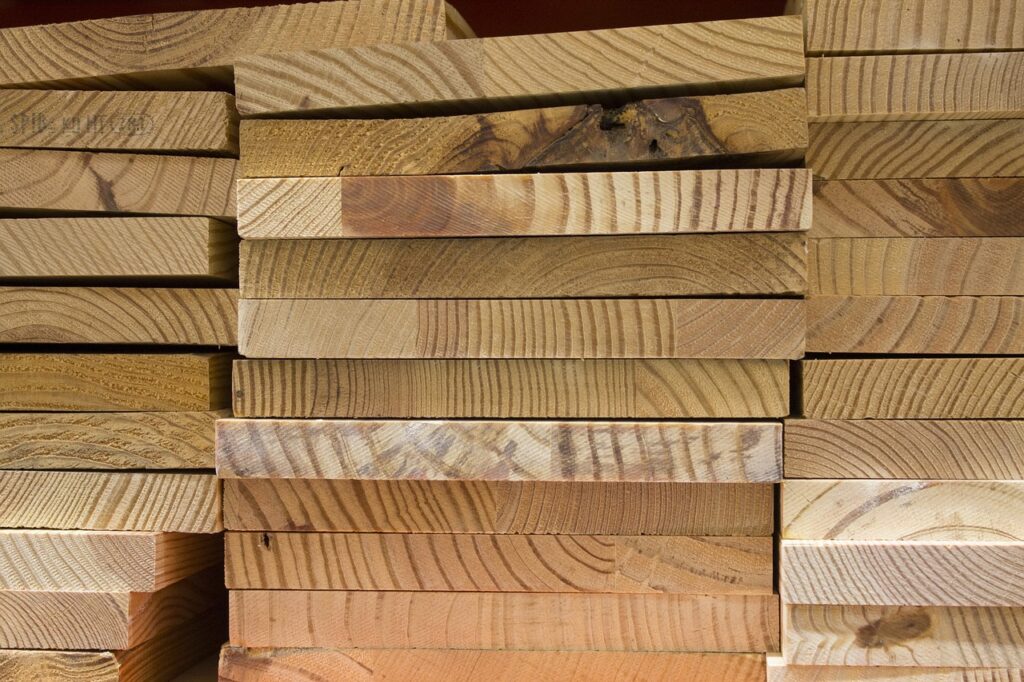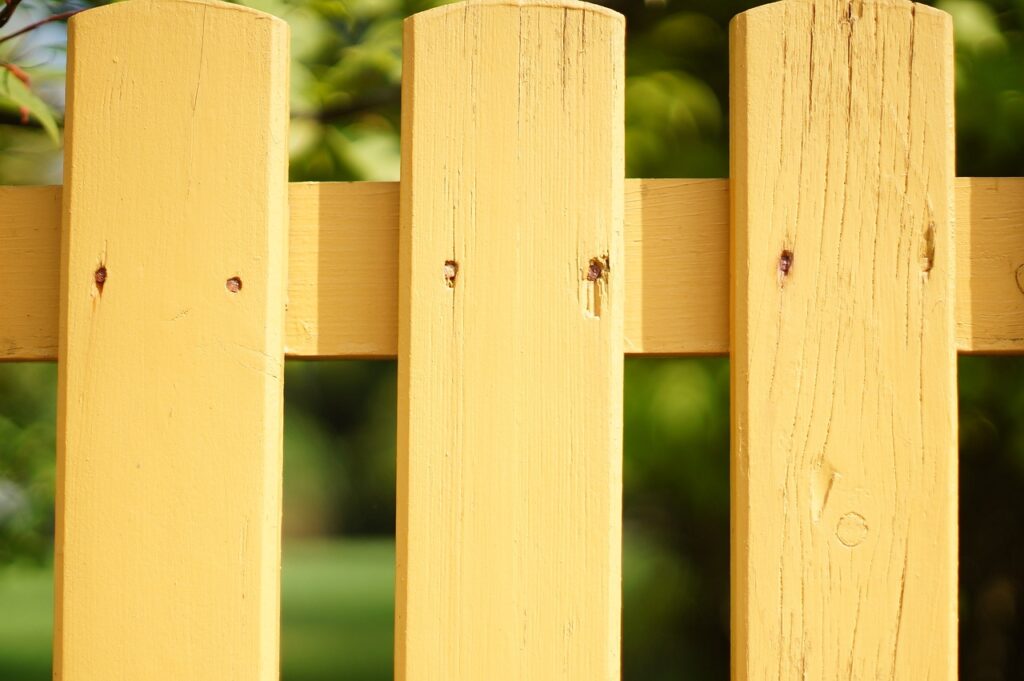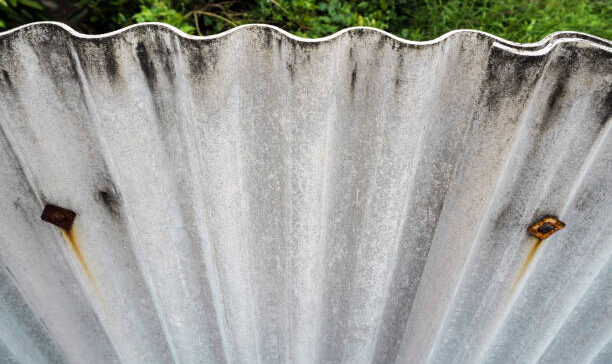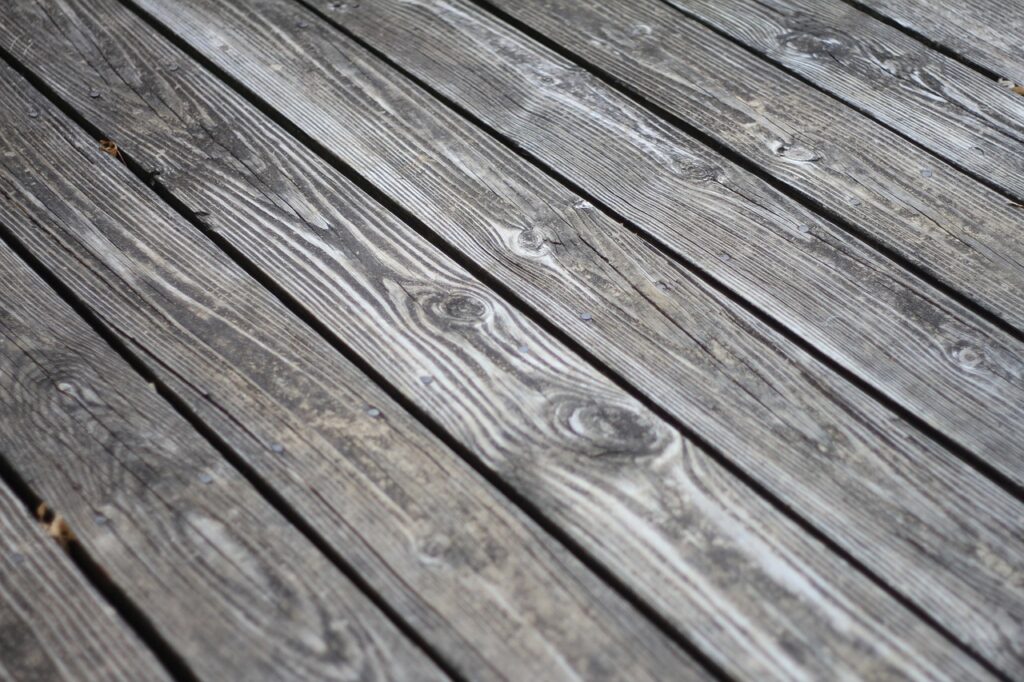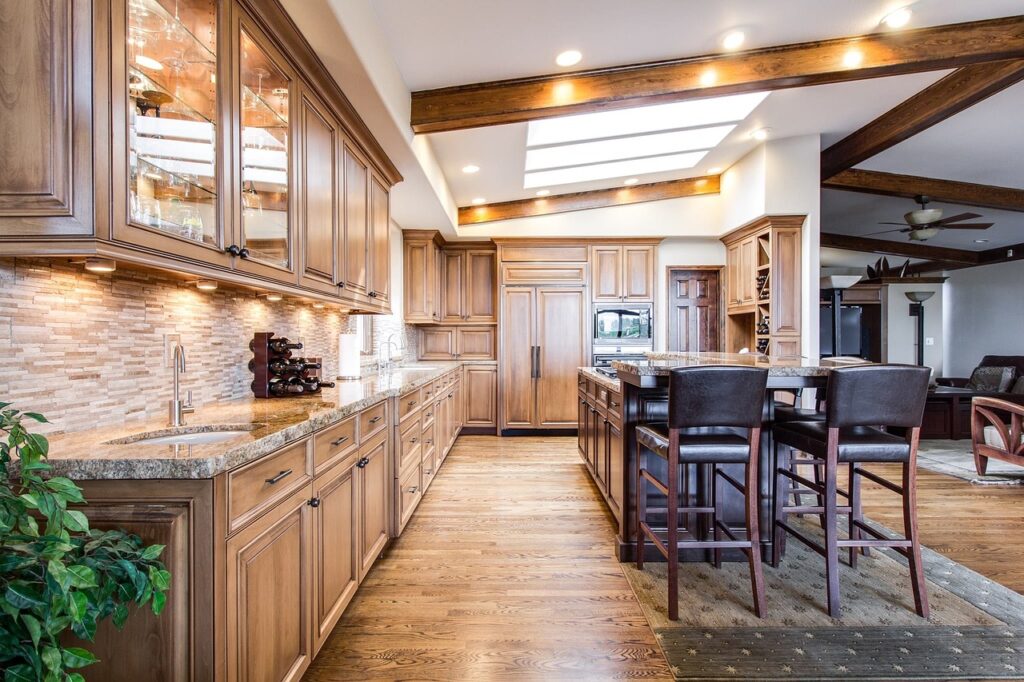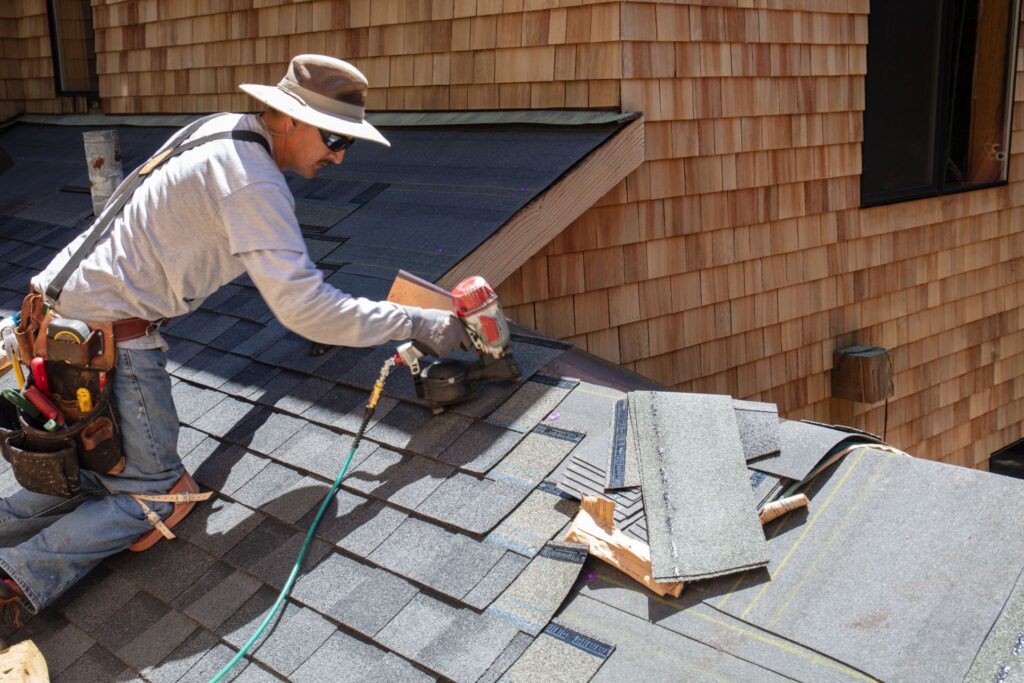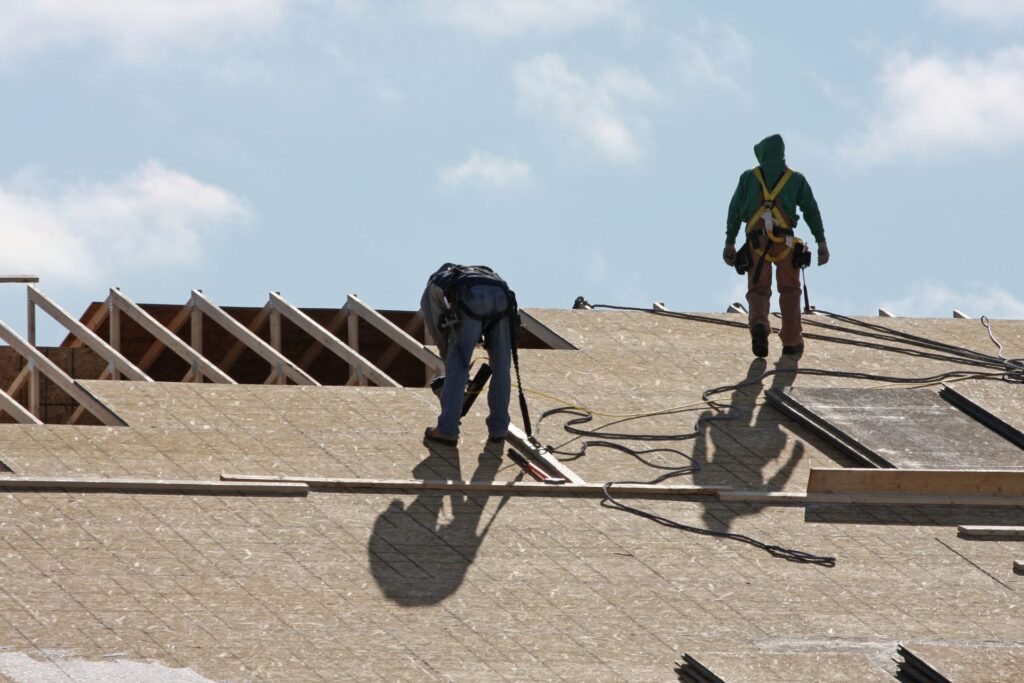Welcome to your go-to guide on understanding the demolition of concrete slab cost in NZ, where we break down everything you need to know before starting your project. Whether you’re removing an old driveway, a damaged patio, or a worn-out foundation, knowing the costs upfront can save you from unexpected expenses and stress. Concrete slab demolition isn’t just about smashing concrete, it involves careful planning, the right equipment, skilled labour, and safe disposal. In New Zealand, prices can vary based on the slab’s size, thickness, location, and accessibility, as well as council permits and waste management fees. This guide will walk you through the factors that influence pricing, the difference between DIY and hiring a professional, and smart ways to save money without compromising on safety or quality.
The cost of demolishing a concrete slab in NZ typically ranges from $50 to $150 per square metre, depending on factors like slab thickness, reinforcement, site accessibility, and disposal fees. Prices may be higher in urban areas or for heavily reinforced slabs, while smaller, accessible projects can cost less.
- Understanding Concrete Slab Demolition
- Factors That Affect The Cost In NZ
- Typical Cost Ranges In New Zealand
- Professional Vs DIY Demolition
- Additional Costs To Consider
- How To Save Money Without Cutting Corners
- Step-By-Step Process For Professional Demolition
- Legal And Safety Requirements In NZ
- Questions To Ask Before Hiring A Contractor
- FAQs: About Concrete Slab Demolition Cost In NZ
- Conclusion
- Find A Professional Demolition Company Near You!
Understanding Concrete Slab Demolition
A concrete slab is a flat, horizontal surface made from poured concrete that is commonly used in construction for its strength, durability, and versatility. In New Zealand, you’ll often find concrete slabs forming the base for driveways, patios, garage floors, sheds, and even building foundations. These slabs are typically reinforced with steel mesh or rebar to provide extra stability and prevent cracking over time. Depending on the project, the slab thickness can range from just a few centimetres for light-duty surfaces to much thicker designs for load-bearing structures.
What A Concrete Slab Is And Where It’s Commonly Used
Concrete slabs are a go-to choice in both residential and commercial construction because they provide a solid, level base that can withstand heavy loads and weather conditions. In homes, they are often used for garden paths, outdoor entertaining areas, and extensions. In commercial settings, you might see them supporting warehouse floors or forming large paved areas for vehicles. Their low maintenance requirements and long lifespan make them a popular option across New Zealand.
Reasons Why You Might Need To Remove One (Renovations, Damage, Structural Changes)
There are several reasons why a concrete slab might need to be demolished. Renovations are one of the most common, if you’re redesigning your outdoor space, extending your home, or upgrading materials, removing the existing slab is often the first step. Damage is another factor; over time, slabs can crack, shift, or sink due to poor installation, soil movement, or water damage, making them unsafe or unsightly. Structural changes can also require slab removal, such as altering the foundation of a building, installing new plumbing or drainage systems, or replacing an old slab with one that meets updated building standards. Whatever the reason, slab demolition needs to be planned carefully to ensure it’s done safely, efficiently, and in compliance with local regulations.
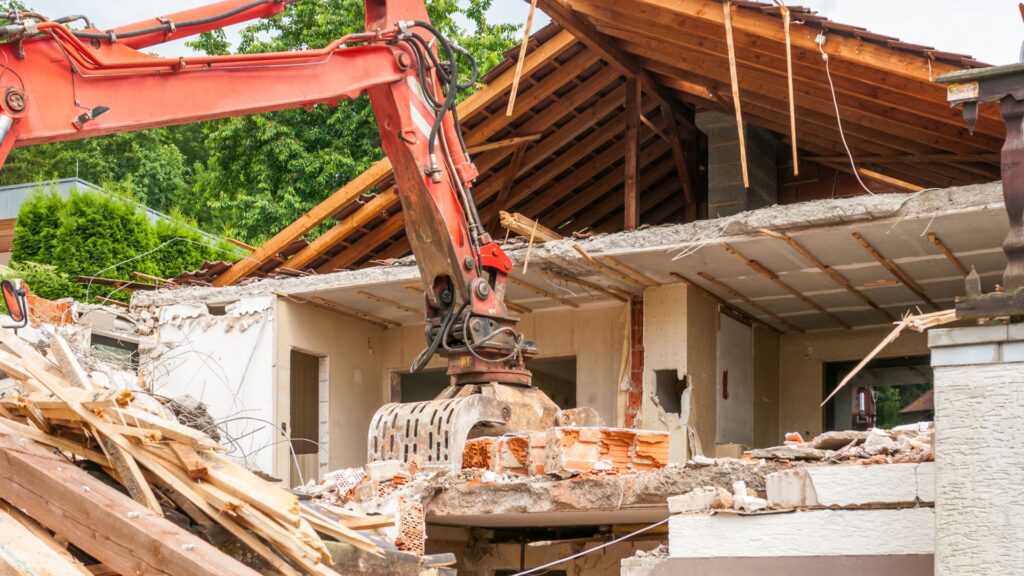
Factors That Affect The Cost In NZ
When it comes to understanding the demolition of concrete slab cost in NZ, several important factors play a role in determining the final price you pay. Knowing these details not only helps you budget accurately but also gives you the confidence to choose the right approach for your project.
Size And Thickness Of The Slab
The size and thickness of your concrete slab are among the biggest cost drivers. Larger slabs require more time, labour, and machinery to break down and remove. Thicker slabs, especially those exceeding 150mm, need heavier equipment and often take longer to demolish, which increases labour costs. For example, removing a small garden path will cost much less than demolishing a reinforced driveway or foundation.
Type Of Concrete (Reinforced Or Not)
The type of concrete significantly impacts both the effort and cost. Reinforced concrete, which contains steel rebar or mesh, is much tougher to break apart and often requires specialised cutting tools or stronger demolition equipment. Non-reinforced concrete is easier to remove and generally costs less to handle. Contractors also factor in the extra time and disposal requirements when dealing with reinforced slabs.
Accessibility Of The Site
Site accessibility is a key consideration for contractors in New Zealand. If heavy machinery can easily reach the demolition area, costs tend to be lower. On the other hand, tight spaces, steep driveways, or areas with limited entry points can slow down the process and require more manual labour, increasing the overall price. Good access means quicker work and fewer complications.
Labour And Contractor Rates In New Zealand
Labour rates vary across NZ and can influence the total cost. Urban areas like Auckland, Wellington, and Christchurch often have higher rates compared to rural regions. Skilled contractors with experience in concrete slab demolition may charge more, but their efficiency and expertise can save you money in the long run by avoiding mistakes or delays.
Disposal And Recycling Fees For Debris
Once the slab is broken up, all that concrete needs to be removed and disposed of. Disposal fees vary depending on your location and whether the concrete is going to a landfill or a recycling facility. In many parts of NZ, recycling concrete into aggregate for other construction projects can lower costs and reduce environmental impact. Contractors may pass on these savings if recycling options are available.
Permit And Compliance Requirements
Depending on the size and purpose of your slab, you might need council permits before starting demolition. Some councils in NZ require compliance with building codes or environmental regulations, which can add to your costs. While these permits may seem like an extra expense, they ensure the work is carried out legally and safely, protecting you from fines or legal issues later on.
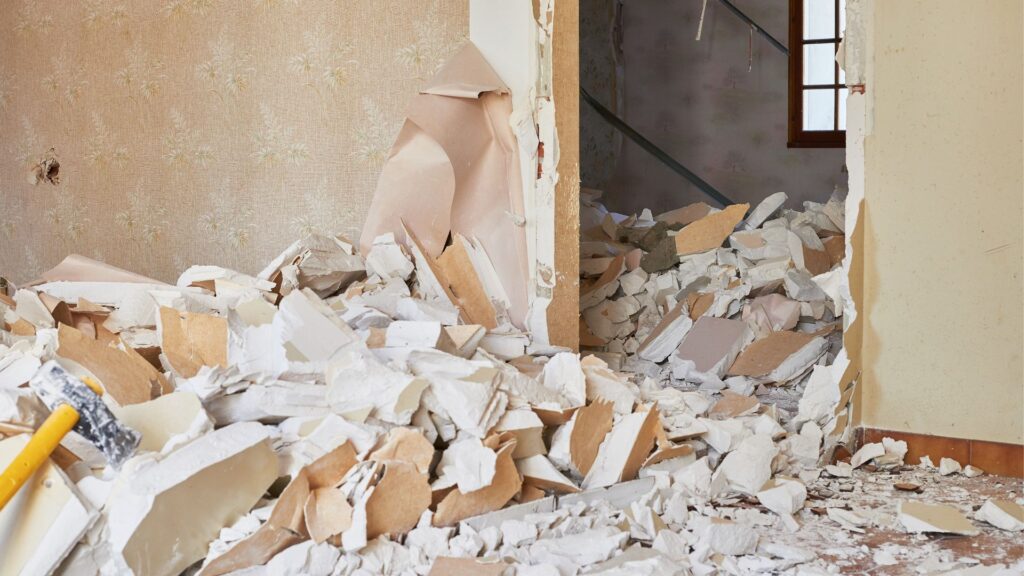
Typical Cost Ranges In New Zealand
When budgeting for the demolition of a concrete slab in New Zealand, it’s important to understand that prices can vary widely depending on the size of the slab, where you live, and whether you choose to do it yourself or hire a professional. By knowing the general cost ranges, you can plan your project more accurately and avoid unexpected expenses.
Estimated Price Ranges For Small, Medium, And Large Slabs
For small slabs such as garden paths, small patios, or thin driveway sections, you can expect to pay around $50 to $90 per square metre. These jobs usually require less labour and equipment, which keeps costs lower.
Medium-sized slabs, such as standard garage floors or larger patio areas, often range from $80 to $120 per square metre. These jobs take more time, require heavier machinery, and may involve thicker or reinforced concrete.
For large slabs like full driveway demolitions, warehouse floors, or commercial spaces, costs can range from $100 to $150 per square metre or more. These projects typically involve reinforced concrete, large-scale debris removal, and higher labour hours, which all contribute to the final price.
Differences Between Urban And Rural Rates
Urban areas, especially large cities like Auckland and Wellington, often have higher labour rates and disposal fees. Contractors may also face traffic restrictions or limited site access, adding to the cost.
In rural areas, while labour rates can be slightly lower, other expenses such as transporting heavy equipment to remote sites may push the price up. You might save on disposal fees in smaller towns, but long travel distances can offset those savings.
Cost Variations Between DIY And Professional Services
A DIY demolition might seem cheaper at first, especially if you already have basic tools, but the savings are not always significant. You will still need to hire or buy heavy-duty equipment like jackhammers, concrete saws, or mini excavators, which can cost hundreds per day.
Professional demolition services often include everything, labour, machinery, safety measures, debris removal, and disposal fees. While you might pay more upfront, you gain the advantage of speed, safety, and quality results. In most cases, hiring an experienced contractor can prevent costly mistakes and unexpected delays.
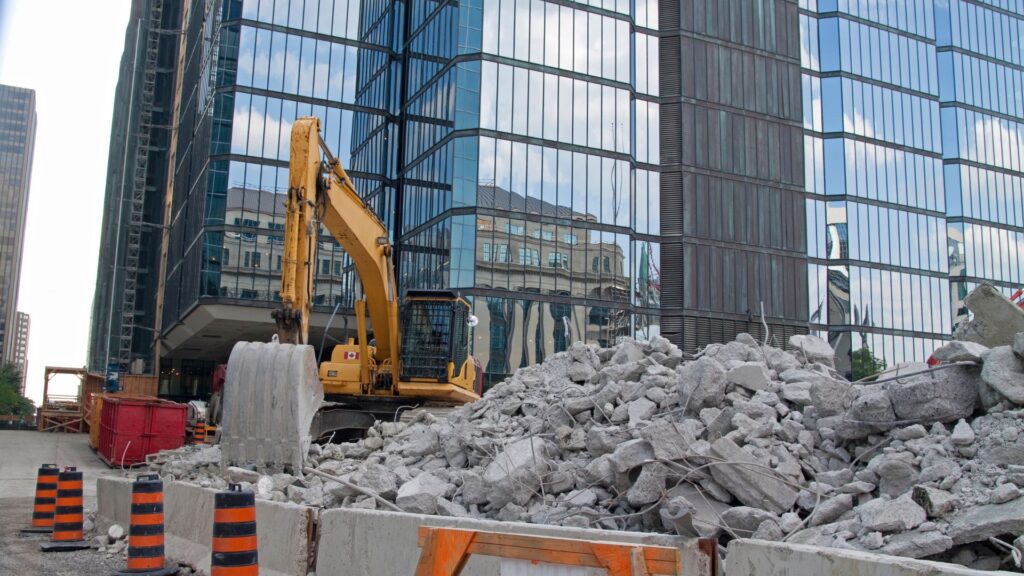
Professional Vs DIY Demolition
Deciding between hiring a professional and attempting DIY concrete slab demolition is one of the biggest choices you’ll make before starting your project. Both options have their own advantages, challenges, and costs, and the right choice depends on your budget, timeframe, and the complexity of the job. Below, we’ll break down when hiring a professional makes sense, what risks you might face with a DIY approach, and the potential hidden costs of each option.
When Hiring A Pro Makes Sense
Bringing in a professional demolition contractor is often the best route for large, thick, or heavily reinforced concrete slabs. Professionals have the right equipment, such as jackhammers, excavators, and cutting tools, to complete the job quickly and safely. They also follow New Zealand’s health and safety regulations, which helps prevent workplace accidents. In addition, professionals handle waste disposal in compliance with local council rules, saving you the hassle of finding and paying for a disposal site. Hiring a pro also makes sense if your slab is located near utilities, pipes, or structures that could be damaged during demolition. In short, if you want peace of mind and minimal disruption, a qualified contractor is worth the investment.
Risks And Challenges Of DIY Slab Removal
While doing it yourself can seem like a way to save money, concrete slab demolition is far from a simple weekend project. Without the right tools, breaking apart a slab can be exhausting, time-consuming, and physically demanding. There’s also a higher risk of injury from flying debris, heavy lifting, or equipment misuse. Inexperienced DIYers may damage surrounding areas or fail to remove all of the slab, leading to extra work later. Another challenge is waste disposal, without access to professional trucks or skip bins, transporting heavy concrete pieces can become a major obstacle. If you’re not prepared for the physical effort and safety requirements, DIY demolition can quickly turn into a costly mistake.
Potential Hidden Costs Of Each Option
Both professional and DIY demolition can come with hidden costs that aren’t obvious at first. For professional services, these might include fees for permits, disposal of hazardous materials, or unexpected challenges like discovering thicker concrete or underground obstacles. For DIY, hidden costs often arise from tool rentals, fuel for machinery, skip bin hire, injury-related expenses, or fixing accidental damage. You may also lose valuable time, time that could be spent on other parts of your project, if the job takes longer than expected. Being aware of these potential extra expenses helps you make a realistic budget and avoid unpleasant surprises.
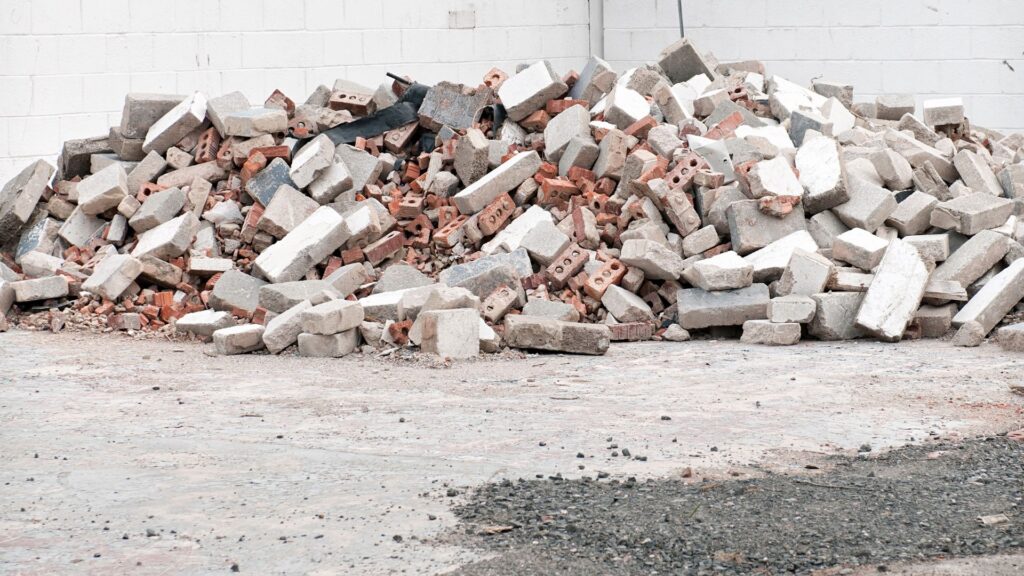
Additional Costs To Consider
When planning the demolition of a concrete slab in New Zealand, it’s important to look beyond the initial removal price. Many property owners underestimate the extra expenses that can come after the slab is gone, which can quickly push the overall budget higher. Understanding these costs in advance will help you plan better and avoid unexpected surprises.
Surface Preparation For The Next Stage Of Work
Once the slab is removed, the surface often needs to be prepared for the next phase of your project. This may include cleaning up leftover debris, smoothing rough edges, or adding a base layer if you’re installing new concrete, tiles, or landscaping. Professional preparation ensures the new surface is stable, level, and ready for use. Neglecting this step can lead to problems later, such as uneven flooring, drainage issues, or premature wear.
Soil Testing Or Ground Leveling After Removal
Demolition can disturb the soil beneath the slab, making it essential to check ground stability before proceeding with new construction. Soil testing identifies potential issues like poor compaction, contamination, or drainage problems. Ground leveling may also be necessary to create a flat, even base. This step not only improves safety and appearance but also extends the lifespan of whatever structure or surface you plan to build next.
Transportation And Landfill Fees
Removing a concrete slab generates a significant amount of heavy waste that needs to be properly disposed of. Transporting debris to an approved facility can be costly, especially if your property is far from a landfill or recycling center. Many contractors include disposal fees in their quotes, but it’s worth confirming to avoid unexpected charges. Recycling concrete where possible can help reduce these costs while being environmentally responsible.
Equipment Hire Charges If Doing It Yourself
If you choose to remove the slab yourself, you’ll likely need to hire heavy-duty tools or machinery, such as jackhammers, concrete saws, or mini excavators. Equipment hire fees can vary depending on location, duration, and the size of the tools. You may also need to account for delivery and fuel costs. While DIY can seem cheaper initially, hiring the right equipment and ensuring you use it safely adds to the total expense.
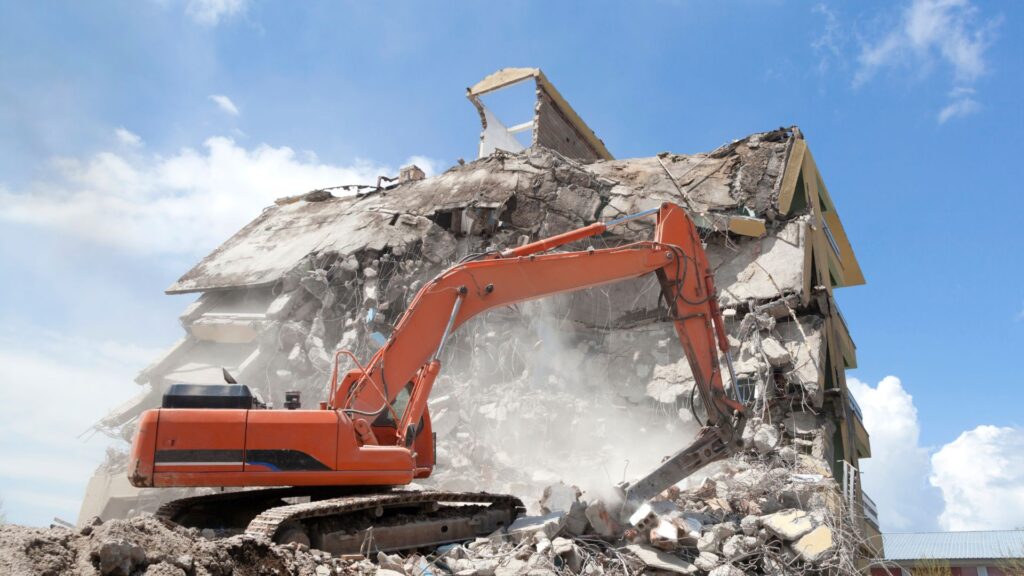
How To Save Money Without Cutting Corners
If you’re planning to remove a concrete slab, you don’t have to compromise on quality just to cut costs. In New Zealand, there are practical ways to keep expenses in check without risking safety or ending up with a subpar result. The key is making smart decisions from the start, looking beyond the cheapest option, and finding solutions that deliver long-term value.
Comparing Multiple Quotes From NZ Contractors
One of the simplest and most effective ways to save money is by getting quotes from at least three reputable demolition contractors in your area. Prices for the same project can vary significantly, even within the same city. When comparing quotes, look closely at what’s included, some contractors might offer a lower base rate but add extra charges for disposal, site cleanup, or equipment hire. A detailed written quote not only helps you understand the true cost but also allows you to negotiate better terms. In many cases, simply showing a competitor’s estimate can encourage a contractor to adjust their pricing or throw in added services at no extra cost.
Recycling Concrete To Reduce Disposal Costs
Concrete disposal fees in NZ can quickly add up, especially for large slabs. Instead of sending everything to the landfill, ask your contractor about recycling options. Recycled concrete can be crushed and reused as aggregate for driveways, paths, or construction fill, which can lower transport and tipping fees. Some recycling facilities even accept concrete at reduced rates, or for free, if it’s clean and free from contamination like steel or wood. This approach not only saves money but also helps reduce environmental impact, which is becoming increasingly important for both homeowners and contractors.
Scheduling Demolition During Off-Peak Times
Timing can have a big influence on the overall cost of your demolition project. Many contractors have peak seasons when demand is high, often during warmer months when building and renovation projects are in full swing. By scheduling your slab removal during quieter periods, such as late autumn or winter, you may be able to negotiate a better rate. Off-peak scheduling can also mean contractors have more flexibility, allowing you to secure your preferred dates and potentially faster turnaround times.
By applying these three strategies, shopping around for quotes, recycling concrete, and timing your project wisely, you can significantly lower your demolition costs in NZ without cutting corners. The result is a safe, efficient, and budget-friendly process that doesn’t compromise on quality.

Step-By-Step Process For Professional Demolition
When you hire a professional for concrete slab demolition, you’re not just paying for someone to break up concrete, you’re investing in a safe, efficient, and compliant process that ensures the job is done right from start to finish. Here’s a detailed look at the steps involved.
Initial Site Inspection
The demolition team begins by assessing the site to understand the scope of work. This includes measuring the slab, checking its thickness, identifying any reinforcement such as steel rebar, and noting surrounding structures or utilities that could be affected. They also review access points for machinery and plan the safest and most efficient way to carry out the demolition. At this stage, the contractor will confirm whether council permits are required and ensure all legal obligations are met before work begins.
Equipment And Safety Measures
Once the plan is set, the crew prepares the necessary tools and machinery. For smaller slabs, jackhammers or demolition hammers may be used, while larger or reinforced slabs often require heavy equipment such as excavators with hydraulic breakers. Safety is a priority, so the team will wear protective gear, secure the work zone with barriers, and ensure compliance with New Zealand’s workplace health and safety regulations. This step helps protect both workers and nearby residents.
Breaking And Removing The Slab
The actual demolition starts by breaking the slab into manageable sections. Professionals use precise methods to control the breakage pattern, avoiding unnecessary damage to surrounding areas. Once broken apart, the concrete pieces are lifted and removed using machinery. If reinforcement is present, it is cut and separated for recycling. This step requires skill and experience to ensure the job is completed efficiently without compromising safety.
Clean-Up And Waste Removal
After the slab is removed, the site is cleared of debris. The contractor will sort and transport the concrete to recycling facilities or approved disposal sites, reducing environmental impact. The ground is then levelled and prepared for the next phase of your project, whether that’s installing a new slab, landscaping, or another construction task. This final step ensures the site is left clean, safe, and ready for use.
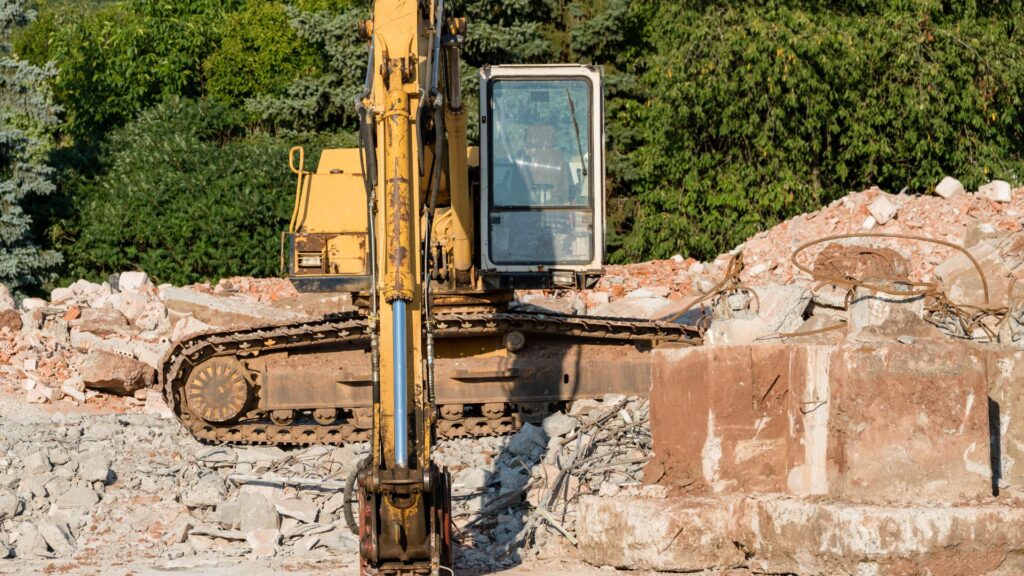
Legal And Safety Requirements In NZ
When planning the demolition of a concrete slab in New Zealand, it’s important to understand the legal and safety requirements that apply to your project. Meeting these standards not only helps you avoid fines and delays but also ensures the work is carried out safely and responsibly. Below, we’ll cover the key areas you need to be aware of, including council permits, workplace safety rules, and environmental responsibilities.
Relevant Council Permits And Approvals
Before any demolition begins, check with your local council to see if you need a permit. Requirements can vary depending on your location, the size of the slab, and whether it forms part of a structural element. For example, removing a driveway might not require formal approval, but demolishing a slab that is part of a building foundation often does. Council approvals help ensure that the work meets building codes and zoning rules, and they also confirm that the demolition will not affect public utilities like water or drainage systems. Starting without the proper permits can lead to costly penalties and even force you to halt work mid-project.
Workplace Health And Safety Rules
In New Zealand, all demolition work must follow the guidelines set out by WorkSafe NZ. This includes carrying out a risk assessment before starting, ensuring all workers have the right training, and using suitable protective gear such as gloves, goggles, and steel-toe boots. Demolition sites should be clearly marked and secured to prevent unauthorised access, protecting both workers and the public. If heavy machinery is involved, only licensed operators should handle it. Following health and safety rules isn’t just about compliance, it’s about preventing injuries and ensuring the job runs smoothly from start to finish.
Environmental Considerations For Concrete Disposal
Concrete waste from demolition can have a big environmental impact if not managed properly. In New Zealand, dumping concrete in landfills without proper disposal methods can breach environmental regulations. Instead, consider recycling the material. Many demolition contractors offer concrete crushing services, turning waste into reusable aggregate for new construction projects. This not only reduces landfill waste but can also lower disposal costs. Additionally, some councils provide dedicated facilities for construction and demolition waste, making recycling a more convenient option. By handling concrete responsibly, you help protect the environment while keeping your project compliant with local laws.
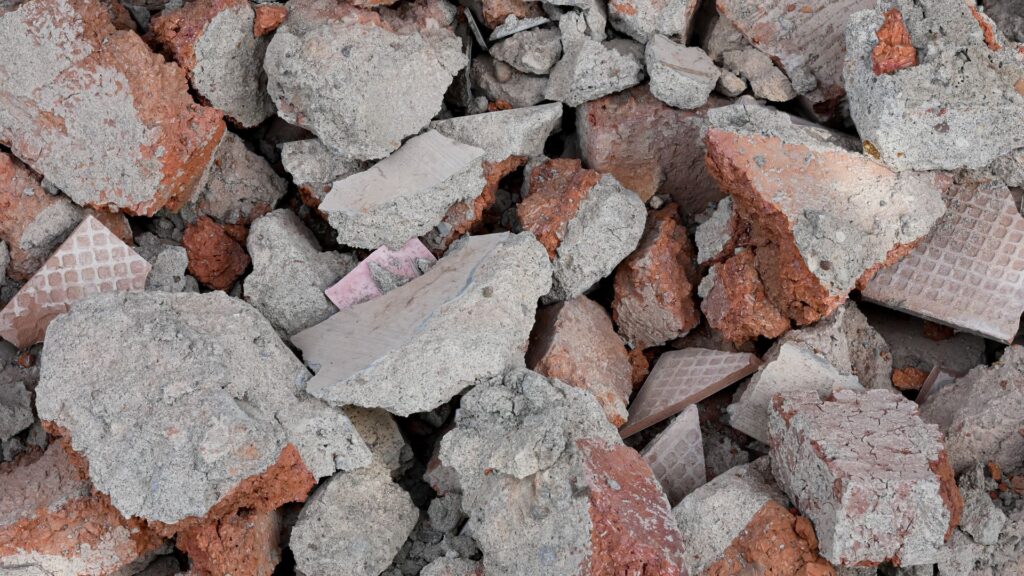
Questions To Ask Before Hiring A Contractor
Before you commit to any demolition project, it’s important to vet your contractor thoroughly. The right professional can ensure the job is completed safely, on time, and within budget. Asking the right questions will not only help you avoid unexpected costs but will also give you peace of mind that your project is in good hands. Here are key points you should cover during your initial discussions.
Experience With Concrete Slab Demolition
Not all demolition work is the same, and removing a concrete slab requires specific skills and equipment. Ask the contractor how many similar projects they have completed in New Zealand and whether they’ve handled slabs of the same size and thickness as yours. An experienced contractor will be familiar with potential challenges such as reinforced concrete, limited access sites, or dealing with underground utilities. The more relevant experience they have, the smoother your project will run.
Inclusions And Exclusions In The Quote
A clear, detailed quote is essential for avoiding hidden costs. Ask the contractor exactly what’s included, such as site preparation, equipment, labour, waste removal, and permit applications. Just as important is knowing what’s excluded. For example, some contractors may charge extra for debris transport, concrete recycling, or unforeseen ground issues. By getting this information upfront, you can compare quotes accurately and budget accordingly.
Timeline And Potential Delays
Time is often a critical factor in demolition projects, especially if it’s part of a larger renovation or construction plan. Ask for an estimated start and finish date, and discuss possible delays that might arise. Factors such as weather, equipment availability, or unexpected underground obstacles can impact timelines. A reliable contractor will provide a realistic schedule and keep you informed if changes occur, helping you avoid disruptions to your broader project.
Insurance And Warranties
Demolition work carries risks, so you should only hire a contractor with proper insurance coverage. Ask for proof of liability insurance and workers’ compensation to protect yourself from potential claims. In addition, find out if the contractor offers any warranties on their work. While warranties in demolition are less common than in construction, some contractors guarantee site clearance or debris removal standards. This extra assurance can save you from headaches down the line.
By asking these questions and taking the time to evaluate the answers, you set yourself up for a smoother, safer, and more cost-efficient concrete slab demolition project. The goal is to work with a contractor who is transparent, experienced, and fully prepared to deliver on their promises.
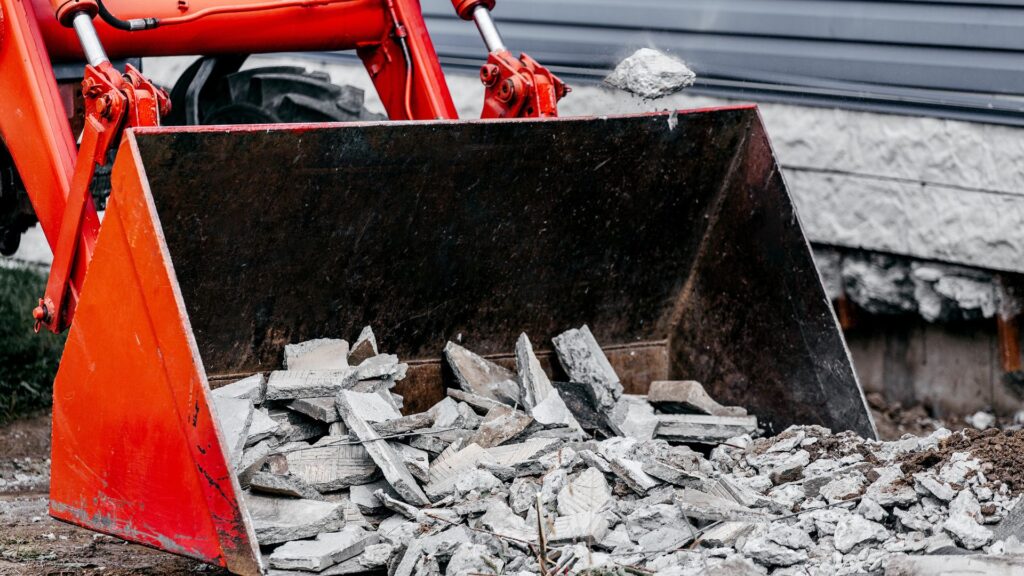
FAQs: About Concrete Slab Demolition Cost In NZ
Conclusion
Balancing cost with safety and quality is essential when planning the demolition of a concrete slab in NZ. While it can be tempting to choose the lowest quote, cutting corners on safety measures, proper equipment, or skilled labour can lead to costly mistakes and potential hazards. Taking the time to research contractors, compare multiple quotes, and verify their experience will help ensure the job is completed efficiently and without unnecessary risks. It’s also important to consider not just the immediate expenses, such as labour and disposal fees, but also the long-term costs that may arise from poor workmanship, such as ground instability or the need for additional site preparation later. By weighing both short-term savings and future implications, you can make an informed decision that delivers value, safety, and lasting results.
Find A Professional Demolition Company Near You!
- Demolition Contractors Tauranga
- Demolition Contractors Hawkes Bay
- Demolition Contractors Auckland
- Demolition Contractors Wellington
About the Author:
Mike Veail is a recognized digital marketing expert with over 6 years of experience in helping tradespeople and small businesses thrive online. A former quantity surveyor, Mike combines deep industry knowledge with hands-on expertise in SEO and Google Ads. His marketing strategies are tailored to the specific needs of the trades sector, helping businesses increase visibility and generate more leads through proven, ethical methods.
Mike has successfully partnered with numerous companies, establishing a track record of delivering measurable results. His work has been featured across various platforms that showcase his expertise in lead generation and online marketing for the trades sector.
Learn more about Mike's experience and services at https://theleadguy.online or follow him on social media:

